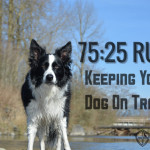8 Doggy Tail Wags
Dogs are naturally expressive creatures, and that’s partly why they make such wonderful companions. From the way they bark, growl or hold their heads, you can pretty much judge how they are feeling or even sometimes, what mood they are in. Often, we can learn even more about our dogs just from the state of their tails.
Interestingly, a dog will not wag his/her tail when it is alone. Tail wagging, according to researchers, is a behavior that takes place exclusively when around others.
A dog’s tail is an appendage of the vertebral column, and they typically contain between six and 23 mobile vertebrae. The direction in which they wag their tail is directed by either side of the brain, and depends on the dominant side of the brain in each individual dog. Moreover, how they move and hold their tails says a lot.
Keep in mind that herding dogs move their tails less when working. As a whole, herding dogs also hold their tails lower than other groups of dogs. The reasoning behind this is so wagging tails will not become a distraction for the sheep or cattle that the dog is herding. So while their tails still do exhibit informative information, their movement may be subtler.
Here are some common canine emotions (complete with tail wags) and what they mean for their owners:
Happy: Waving back and forth, or curled up high
Ashamed: Tail is down as far as it can go without curling, head is probably in the same state
Scared: Tail curls between their legs
In Love: Waves back so excitedly you can barely get a full glimpse because it goes that fast. (I witnessed this last week with my own pup who fell head over heels for Henry, the Golden Retriever on our corner.)
Relaxed: Just laying out, not placed on any side purposely, otherwise known as go-with-the-flow tail
Alert: Straight up in the air
Interested: Horizontal to the ground
Beware of the tail wag that is a little too excited because many dogs have been known to bite while wagging their tails. When sizing up a dog you don’t know, it’s best to pay attention to the complete body language and not just the tail. If their ears are back and teeth are showing, they are probably exhibiting aggressive behavior.
Of course, a dog’s tail is used for more important reasons than reading their moods. All dogs use their tails for equilibrium. More specifically, herding dogs, like Border Collies rely on their tails to help them keep balance as they make turns while herding sheep. Similarly, Labrador Retrievers use their tail to help them swim, maintain their balance in the water, and stay on course as they reach their destination.
Article By:
Danielle Sullivan






